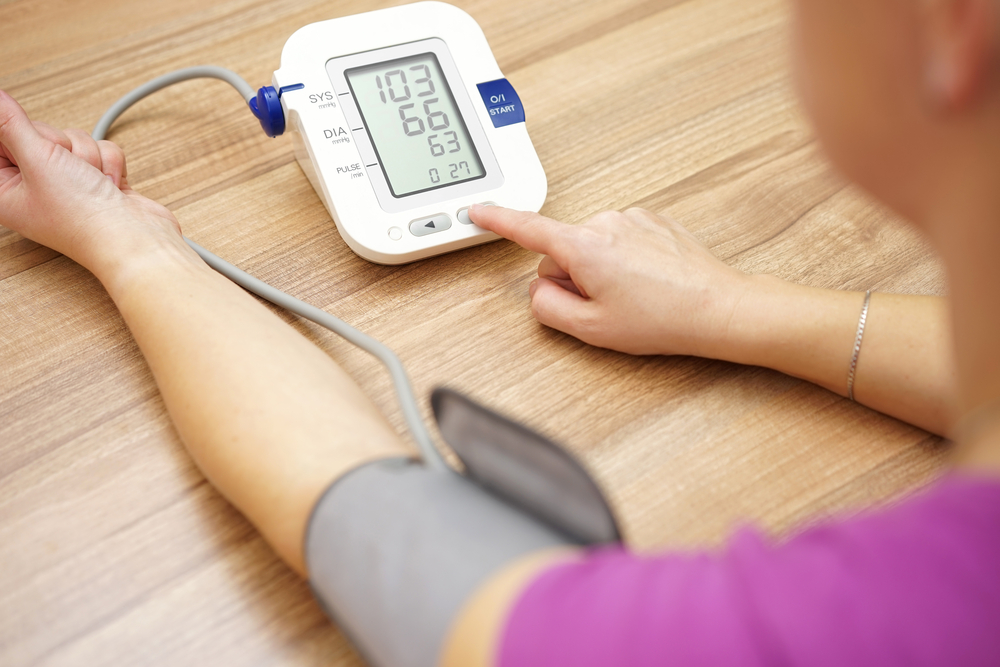Why Does My Blood Pressure Monitor Inflate Twice
Many individuals aren't aware that their blood pressure monitor is inflating twice. If you're seeking strategies to decrease your blood pressure, this blog post will explain why it's critical to determine why a blood pressure monitor inflates twice.
When blood pressure monitors detect irregular heartbeats, they expand. Unfortunately, these abnormalities can occur even when the heart rate is average, leading to incorrect readings in those with high or low blood pressure.
When a person has high or low blood pressure, readings from the cuff will be erroneous due to this inflation mistake, resulting in an incorrect diagnosis of hypertension or hypotension. The purpose of this blog post is to teach readers how to avoid excessive misinterpretations.
Your blood pressure monitor inflates twice to ensure you obtain the most accurate measurement.
Can a blood pressure cuff that is too tight generate a high reading?
Many things influence a person's blood pressure measurement. The tightness with which a cuff is placed around an arm or leg is one of the most critical factors to consider.
When the cuff becomes excessively tight, it cuts off circulation and might result in an incorrectly elevated reading. This blog article will go through what causes high readings and how to avoid them.
What comes to mind when you think about blood pressure? If you're anything like me, the first gut feeling that comes to mind is someone's concern about high blood pressure.
Did I mention that my concerns were unfounded? There are several causes of high blood pressure, and not all of them are negative. This piece will look at the many reasons and what they could signify for your health.
Is 150 90 A good blood pressure?
Blood pressure is a measurement of how much pressure your blood exerts on the walls of your arteries as it flows through them. It is measured in millimetres of mercury (mmHg).
A standard blood pressure measurement should be less than 120/80 mmHg. A higher score indicates that there may be a problem with heart health, which a doctor should evaluate.
Blood pressure is a measurement of how much pressure your blood exerts on the walls of your arteries as it flows through them. It is measured in millimetres of mercury (mmHg).
An average blood pressure measurement should be less than 120/80 mmHg. A higher score indicates that there may be a problem with heart health, which a doctor should evaluate.
Some people, however, have readings less than 140/90 mmHg but still feel lightheaded when they get up or have chest discomfort when exercising.
This might indicate that they have higher-than-normal blood pressure (also called prehypertension). If you suspect you have high normal blood pressure for people aged 18 and above.
Is your blood pressure unusually high? Many individuals focus on the top number (systolic) in their reading, but keeping both numbers in mind is critical.
A recent study discovered that people with a systolic blood pressure of 150 and a diastolic blood pressure of 90 or below are at risk for stroke. This is especially true if you are over 60 or have other risk factors such as diabetes, high cholesterol, heart disease, obesity, or smoking. If your doctor tells you that your readings are in this range, it's time to act.
What should I do if my blood pressure is 160/100 or higher?
If your blood pressure is high, you may need to take action to decrease it. For most people with hypertension, the first step is to make lifestyle modifications such as eating a balanced diet and exercising regularly. If they do not work, medicines that can assist manage the issue are available.
Your doctor will advise you on ideal for your case and how frequently you monitor your blood pressure readings to change therapy as needed. It is significant because of the increased risk of heart attack or stroke and because high blood pressure can lead to other health issues such as renal disease or dementia, among others.
The first thing you should do is take a big breath. The next step is to contact your doctor or phone 911 if you're feeling lightheaded or dizzy and nothing else is working. If you have a chest congestion, shortness of breath, numbness in your arm or face, and a severe headache with nausea, you may be suffering from a stroke. If this happens, you should go to the emergency hospital straight soon.
Why do the readings on my blood pressure machine differ?
Many users are concerned as to why their blood pressure machine produces varying results. Many variables contribute to this, and it is critical to grasp the distinctions between high and low values for your health.
An oscillometric sphygmomanometer, which measures artery stiffness, will be available at your doctor's office. This gadget measures diastolic blood pressure rather than systolic blood pressure, and it does not employ mercury or aneroid manometers.
To avoid interfering with pulse detection by occluding artery flow during deflation, the cuff inflates around the arm at least 20 mmHg above systolic (the upper number). It then gradually deflates until the reading returns to normal.
The cuff size, arm circumference, and depth of breath contribute to blood pressure measurement accuracy. A cuff that is too tight will give you a higher reading than one that is too loose, but an arm with more fat on it would give you a lower reading.
When attempting to obtain an accurate reading from your machine, it is critical to consider these aspects; otherwise, you may be subjecting yourself to unnecessary treatments. Check out this blog article for pointers on how to ensure your readings are always correct.
Is it OK to measure my blood pressure more than once?
Multiple blood pressure measurements are not unusual, but when should one stop taking the reading? Because blood pressure might fluctuate in reaction to worry or physical exertion, it's common to take two or three measurements over some time.
If you're still feeling symptoms like nausea, dizziness, chest discomfort, or shortness of breath, the American Heart Association suggests testing your blood pressure again after five minutes. If you are diagnosed with high blood pressure and are concerned about what the numbers indicate for your health, you should repeat your reading.
Keep in mind that there are no set standards for how frequently a person should monitor their blood pressure at home and see a doctor before proceeding with any additional measures like medication adjustments or hospitalization.
Conclusion
Your blood pressure monitor may be inflating twice as it attempts to adjust for the pump. This might happen if your machine does not boost sufficiently or if you do not utilize the cuff correctly.
Checking for air bubbles in the hose, attaching a tube with holes on both ends, blowing through one end before utilizing the other side as an attachment point, and then twisting off any extra tubing from around the cuff are best ways to avoid this problem.



